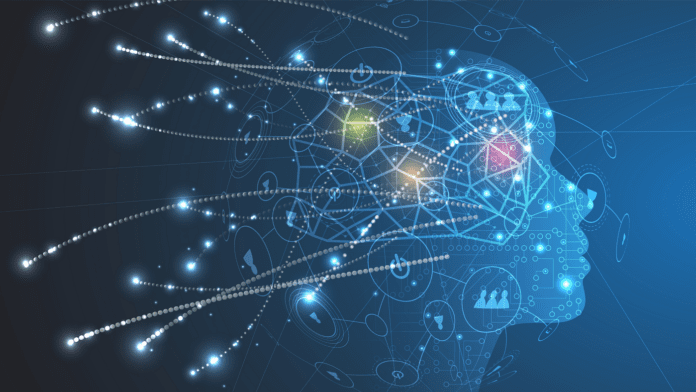I created the word “AI-formation” to characterize the subtle yet significant influence that artificial intelligence (AI) algorithms have on innovation and civilization, which is becoming a phenomenon.
According to a University of Toronto report, this trend takes the form of the homogenization impact, in which systems powered by AI that are meant to maximize efficiency and satisfy general preferences result in homogeneity in creative content, social interactions, and expressions of art unintentionally.
The fundamental contradiction of the problem is that, despite AI’s ability to diversify and enhance our cultural environment, it is also moving us in the direction of a world that is less diverse and more homogeneous.

AI has completely changed the ways goods are promoted and directed. Personalizing user experiences to never-before-seen levels while precisely anticipating and affecting consumer preferences.
But rather than fostering new consumer behaviors, this Technology frequently serves to reinforce preexisting ones. Through persistently displaying advertisements and products according to previous experiences and choices, these systems establish a feedback system that reduces the amount of exposure to alternative options. This self-reinforcing loop has the potential to homogenize customer experiences by limiting exposure to a variety of products and reducing the chance of discovering novel, inventive, or niche products.
AI is now able to create art by drawing inspiration from large databases of modern and classical artworks, or it may be employed in creating music by identifying trends in popular music categories. These applications of AI have significantly expanded the possibilities for artistic expression.
Even if these technological advancements are incredible, they have serious drawbacks. The disadvantage is artificial intelligence’s instinct for choosing current trends. These algorithms frequently ignore less widespread, unusual art forms in favor of learning from and imitating generally recognized and popular styles, which homogenizes creative results. This trend runs the risk of generating an echo chamber of identical ideas in addition to limiting the range of styles and expressions.
How artificial intelligence is being incorporated into the literary world—from writing to content moderation to book recommendations—is also changing how we engage with literature. AI algorithms evaluate user data to recommend books and customize content streams. In certain situations, assist with story or article creation. These algorithms run platforms like online booksellers and reading applications.
These tools are practical, but they unintentionally restrict the range of accessible sources. AI-driven suggestions frequently overlook various literary voices and unique genres by giving priority to books and genres that follow widely recognized consumer preferences or popular trends, which restricts readers’ experience to the entire range of narrative potential.
A disturbing tendency that comes with our growing dependence on Technology to inform our decisions and preferences is the suppression of anomalies and the demise of individuality.
Some creatures feature an extraordinary talent that is beyond the standard.
Without a doubt, AI has demonstrated ability in both combinational and experimental creativity. It is combining existing concepts to produce innovative concepts within preexisting frameworks and aesthetics.
AI, on the other hand, needs help with revolutionary creativity, which is coming up with concepts that go beyond preexisting frameworks to produce something unique.
It is important to recognize the limited validity of those who argue that humans using artificial intelligence will eventually replace humans lacking artificial intelligence instead of AI overtaking humans in the first place. AI-enabled humans cannot substitute unique humans without AI. Still, the homogenizing effects of AI forming a solid space will make it harder for the world to access unconventional and non-conformist creations, making individuals who “think distinct” even more significant and unique.
As a result, the minority visualization of data problems is becoming increasingly important in the field of artificial intelligence (AI), especially in machine learning as well as deep learning algorithms.
AI systems that are mostly trained on popular data not only degrade our intellectual and cultural landscapes but also reduce the possibility of innovative ideas and works of art, which typically originate from the margins instead of the mainstream.
By focusing on and reproducing what is already well-liked or labeled “standard,” they frequently ignore the distinctive and uncommon viewpoints, which are often crucial for creativity and growth in society.

The difficulty lies in making sure artificial intelligence algorithms are programmed on datasets that sufficiently represent the tails of the Gaussian slope in addition to the peak, as this ensures diversity and lessens average flaws to address this deviation and make the algorithms more representative of the diversity found in real life, methods like as information rebalance and augmentation to minority groups are used.

Thus, why is it important to address the “AI formalization” during the AI design and implementation process? Not just because diversity is important as a whole itself.
Instead, it’s about making sure that other extraordinary works of art, concepts, and instances of strange human brilliance will continue to make their way to all of us, breaking the artificial barriers of homogenization and standardization that algorithms have established.
There is a risk that AI-generated content that heavily tends towards the average will overshadow and dull the complex and frequent unpredictability of human creativity, decreasing the likelihood of encountering exceptional and unexpected incidents and possibly restricting the development of revolutionary effects of any sort.
The technological advancement that helps us understand the value of our intelligence is artificial intelligence.




